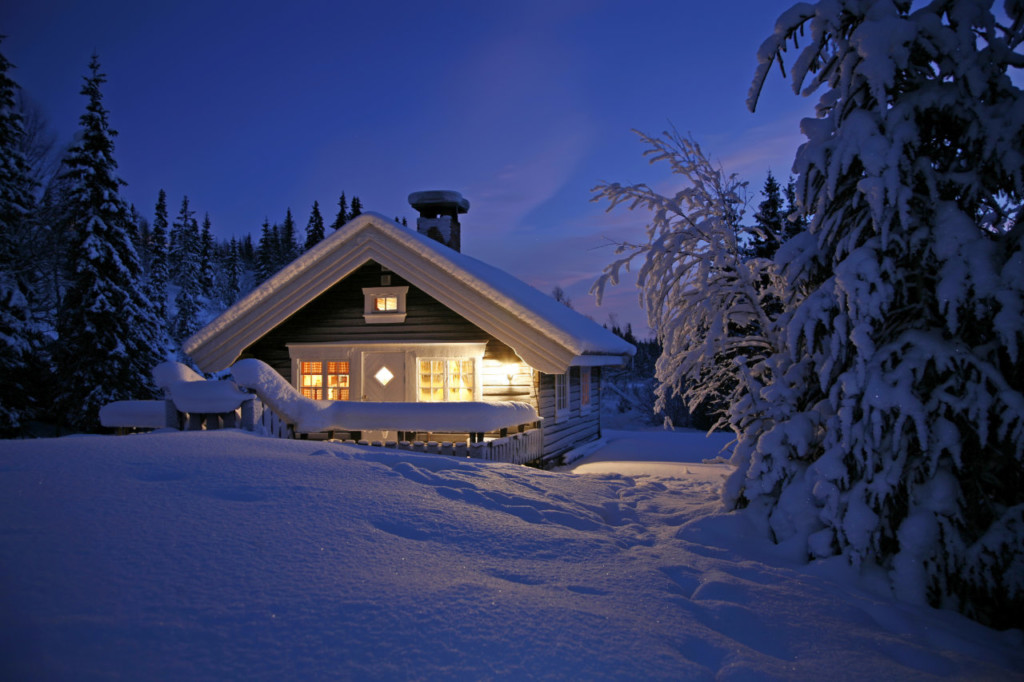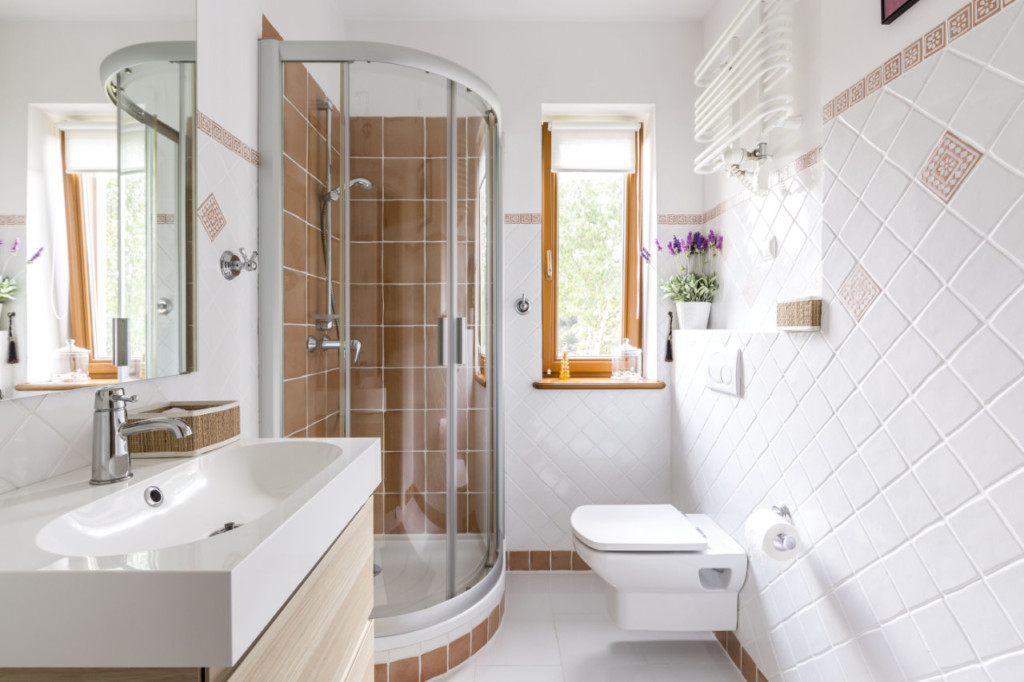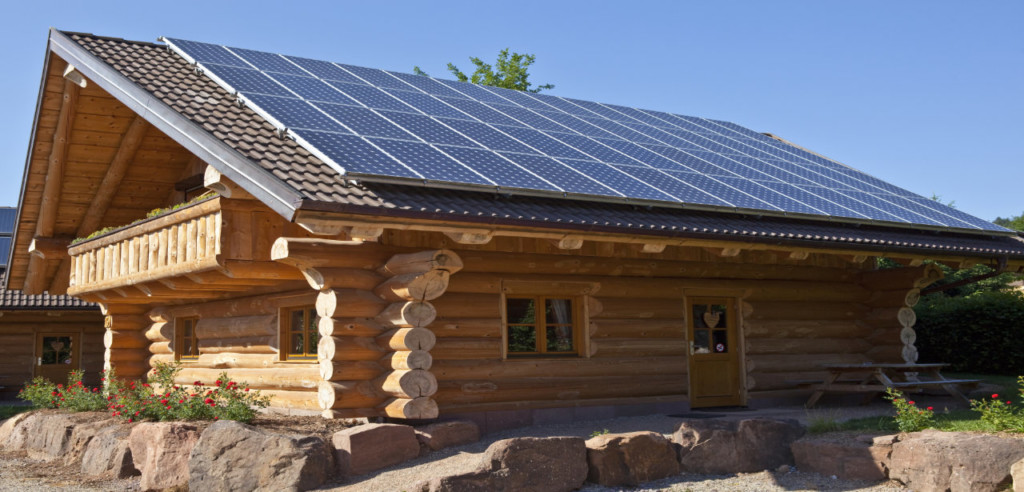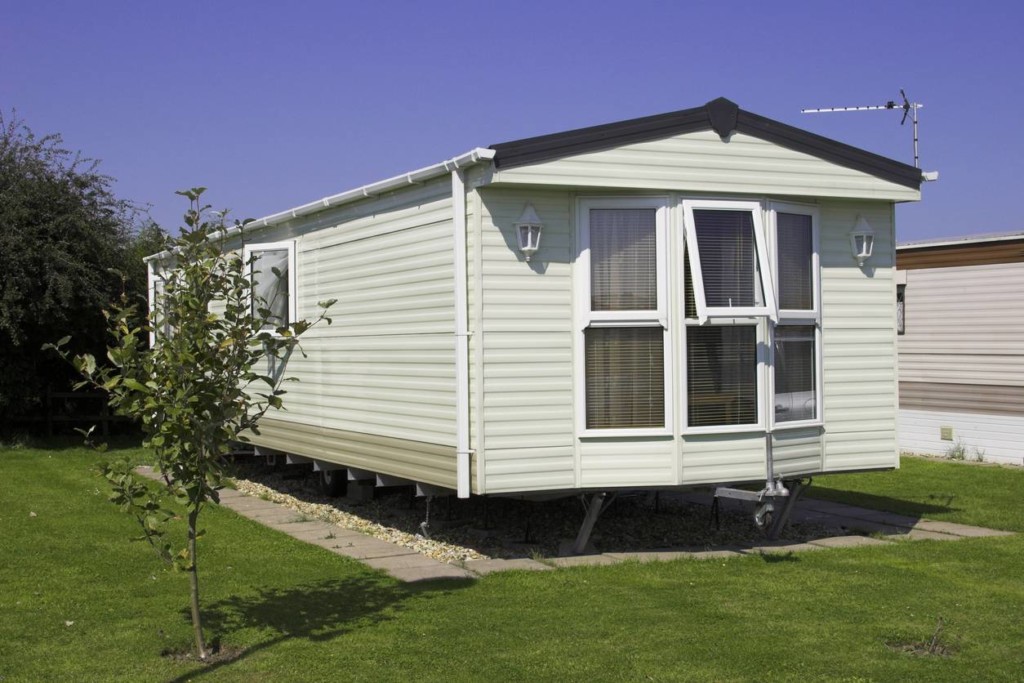
If you’re dreaming of escaping to a tiny cabin in the woods, you may be closer to making that dream a reality than you think. With the right approach, you can live a self-reliant life and disconnect from the daily hustle. Yes, this does require a little work! Being self-reliant involves finding off-grid alternatives to the many modern comforts we all take for granted. Below you’ll find a breakdown of our top tips for designing your perfect tiny home away from home.

Where you choose to build your off-grid cabin will determine a lot within your design. From weather conditions to soil richness, your location has the potential to make building a little easier or a little more challenging.
Most cabin-dwellers choose isolated locations with steady seasons and plenty of fertile land. This ensures there is enough sunlight for solar energy and the possibility of year-round self-reliant gardening.
Your location will be the number one factor in determining your construction materials from a design perspective. Environmental and weather conditions call for weather-resistant materials and hardware. Humidity, snow, rain and wind can all affect the longevity of a cabin, so be sure to research your location and the building materials that best suit its environmental conditions.

The purpose of off-grid living is to downsize…in a big way. Minimalism and self-reliance go hand-in-hand, and the smaller your cabin, the less ‘stuff’ you’ll be able to live with. Small cabins are also easier to maintain when you have limited access to contractors and hardware.
A typical cabin takes up less than 800 square feet of land to minimize the impact on the environment. For long-term comfort, your floor plan should include everything you’re used to, but on a smaller scale.
Configure your bathroom to fit a shower, toilet, and vanity with storage under the sink. Use space-saving measureswherever possible, such as a cavity slider door, corner shower, shelving and a wall-hung toilet.
Design an open or partially-open kitchen to create the illusion of more space. You will need to incorporate a food preparation counter, a small sink, a pantry, stove, oven and refrigerator. Utilize as much wall space and below-counter space as possible for storage.
An open plan living area reduces the need for extra walls and doors. The simple design will also maximize your square footage and allow you to move freely within your cabin.
Include a loft with enough space for one or two beds. A loft is a cost-effective alternative to a second storey and an easy solution to separate sleeping and living areas.
Creative storage solutions are key to maximizing space. Include drawers under seating, create empty space above cabinets for larger items, install corner shelving, or build a full-wall shelving unit.
Natural light is key to creating the illusion of more space and enhancing your cabin’s interiors. Glass sliders and windows bring the outdoors in, allowing you to marvel at nature when it’s too cold to venture outside.

Seeing as you’ll be living among nature, you may as well build yourself a space to enjoy it! A simple outdoor area creates a second living space and forms the indoor-outdoor flow essential to cabin living.
It’s best not to overcomplicate things. An outdoor space is simply a patio or deck with full or partial shading. If you plan to make your cabin transportable, create a retractable deck that can fold away when you’re on the move.
With some comfortable, weather-resistant furniture, you’ve got yourself a place to relax and be one with nature. Your outdoor area will be highly utilized, so be sure to add this to your design plans.

Generating your own electricity and saying goodbye to utility bills is all part of going off the grid. But it’s not as simple as slapping on a few solar panels and calling it a day. Your choice of energy source will depend on your location’s environmental conditions and should be included in your cabin design plans. Let’s look at the different options.
Solar power is often the first energy source that springs to mind when we think about going off the grid. Providing stable electricity in locations with plenty of sun exposure, solar power is a reliable and low maintenance energy source. Solar panel installation is expensive. However, long-term savings provide a great return on investment. It’s wise to combine solar panelling with another energy source to retain energy production in periods of limited sunlight.
If your location is particularly breezy, wind turbines may be the right energy solution for you. Wind turbines rely on consistent windy conditions to keep spinning and generating power. As we can’t control the breeze, wind turbines are often used in combination with another renewable energy source.
Micro-hydro electricity is less popular than solar and wind energy, but it’s also much less expensive. Using running water from a nearby river or stream, micro-hydro creates energy from water flowing into a turbine. As water is constantly running, micro-hydro electricity is thought to be the most reliable off-grid energy source as long as your cabin is within reach of natural running water.

Going off the grid is all about maximizing your freedom. What could be more freeing than the ability to go where you like, when you like, and take your home with you?
It’s important to make the most of every opportunity in your cabin design phase. Building your cabin on a galvanized trailer gives you the freedom to make every location as temporary or as permanent as you like.
Whether you’re chasing the sunshine, exploring the coast, or you just want a change of scenery from time to time, simply adding wheels opens up a range of opportunities that make off-grid living even more exciting. It’s easier and more cost-effective to make your cabin transportable prior to building, so if you think you’ll enjoy hopping between locations, make sure you incorporate this into your cabin design.
Live off the grid in comfort and style with a cabin that will bring you long-term happiness. Designing your cabin is one of the most exciting phases in the transition to off-grid living, so have fun creating something unique, sustainable, and self-sufficient.
comments